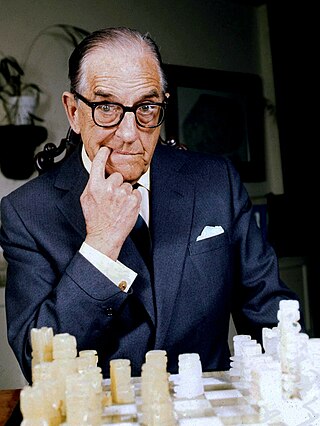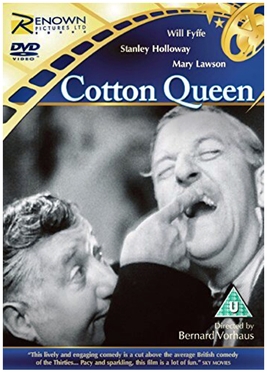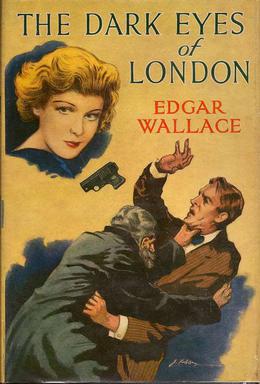Related Research Articles

Twickenham Studios is a film studio in St Margarets, in the London Borough of Richmond upon Thames, that is used by various motion picture and television companies. It was established in 1913 by Ralph Jupp on the site of a former ice rink. At the time of its original construction, it was the largest film studio in the United Kingdom.

Stanley Augustus Holloway was an English actor, comedian, singer and monologist. He was famous for his comic and character roles on stage and screen, especially that of Alfred P. Doolittle in My Fair Lady. He was also renowned for his comic monologues and songs, which he performed and recorded throughout most of his 70-year career.

The Cinematograph Films Act 1927 was an act of the UK Parliament designed to stimulate the declining British film industry. It received royal assent on 22 December 1927 and came into force on 1 April 1928.
Berthold Viertel was an Austrian screenwriter and film director, known for his work in Germany, the UK and the US.

The Last Journey is a 1936 British drama film directed by Bernard Vorhaus and starring Godfrey Tearle, Hugh Williams and Judy Gunn.

Money for Speed is a 1933 British sports drama film directed by Bernard Vorhaus and starring John Loder, Ida Lupino, Cyril McLaglen and Moore Marriott. It is centered on the sport of speedway racing, which was at its peak of popularity at the time.

Cotton Queen, also known as Crying Out Loud, is a 1937 British comedy film directed by Bernard Vorhaus, and starring Stanley Holloway, Will Fyffe, and Mary Lawson.
At the Villa Rose is a 1930 British mystery film directed by Leslie S. Hiscott and starring Norah Baring, Richard Cooper and Northern Irish Actor Austin Trevor. It marked Trevor's screen debut. It was released in the United States under the alternative title of Mystery at the Villa Rose.
Julius Hagen (1884–1940) was a German-born British film producer who produced more than a hundred films in Britain.

The Ghost Camera is a 1933 British mystery film directed by Bernard Vorhaus, starring Henry Kendall, Ida Lupino and John Mills, and based on "A Mystery Narrative", a short story by Joseph Jefferson Farjeon.
Murder at Scotland Yard is 1953 British crime film directed by Victor M. Gover and starring Tod Slaughter, Patrick Barr and Tucker McGuire. It is a sequel to the 1952 film King of the Underworld and depicts the continuing battle between the master criminal Terence Reilly and Inspector Morley of Scotland Yard. Reilly has escaped from prison and Morley is called in to recapture him. It was made at Bushey Studios. It was Slaughter's last feature film.

Crime on the Hill is a 1933 British mystery film directed by Bernard Vorhaus and starring Sally Blane, Nigel Playfair and Lewis Casson. The plot was based on a successful play by Jack de Leon and Jack Celestin. It was made by British International Pictures at Welwyn Studios in autumn 1933.

This Week of Grace is a 1933 British comedy film directed by Maurice Elvey and starring Gracie Fields, Henry Kendall and John Stuart. The screenplay concerns a poor, unemployed woman who is made housekeeper at the estate of a wealthy duchess. It was promoted with the tagline "Cinderella in modern dress". It includes songs written by Harry Parr-Davies, including "My Lucky Day" and "Happy Ending".
Harry Fowler Mear (1888–1985) was a British screenwriter. He spent a number of years at Twickenham Film Studios where his work has been described as "competent but uninspired".

The Dark Eyes Of London is a crime novel by the British writer Edgar Wallace which was first published in 1924. An unbalanced doctor and his brother murder a series of wealthy men to benefit from their life insurance policies, using a charity for the blind as a front for their activities. The persistent Inspector Holt of Scotland Yard is soon on their trail. It was based on an earlier short story The Croakers which Wallace had written.
Operetta films are a genre of musical films associated with, but not exclusive to, German language cinema. The genre began in the late 1920s, but its roots stretch back into the tradition of nineteenth century Viennese operettas.
Victor Kendall was a British screenwriter notable for his work in the 1930s. Kendall wrote the screenplay for Atlantic the first sound portrayal of the Titanic Disaster. Kendall worked for several British studios and production companies but spent most of his screenwriting career with the large British International Pictures organisation where he wrote scripts for several of the companies leading directors such as Ewald André Dupont and Thomas Bentley. According to IMDb, this was the same person who proceeded to an acting career in the United States, commencing as one of the not-specifically named "Students" in the 1939 Laurel and Hardy film A Chump at Oxford. Other films through to 1943 in which an actor of this name appeared are listed in the same source. Against this background, it might be noted that there are no England and Wales birth records for any Victor Kendall in 1903, no sign of emigration to the United States in the 1930s, and no evidence of a person with such a name and approximate date of birth in the 1940 US Census. In that context, the lack of information on the death of this film-industry worker looks unsurprising.

Dusty Ermine is a 1936 British crime film directed by Bernard Vorhaus and starring Anthony Bushell, Jane Baxter and Ronald Squire. In the United States it was released under the alternative title Hideout in the Alps. It was based on the play of the same title by Neil Grant.
Jack Kitchin (1901–1983) was a British film editor and producer. Kitchin worked as editor on over thirty films, and as producer on a further five. He worked in Hollywood for much of his career before returning to Britain where he was employed by Ealing Studios. At Ealing he headed a special unit which made George Formby comedy films.
The Woman Between is a 1931 British drama film directed by Miles Mander and starring Owen Nares, Adrianne Allen and David Hawthorne. It was made at Elstree Studios by British International Pictures, the leading studio of the era. Mander adapted the film from Miles Malleson's 1925 play Conflict. The film is notable for its sexual and political content which has been attributed to a brief period of relaxation in oversight by the BBFC. It was one three similarly themed films which Allen appeared in at the time including Loose Ends and The Stronger Sex.
References
- ↑ Richards p.38